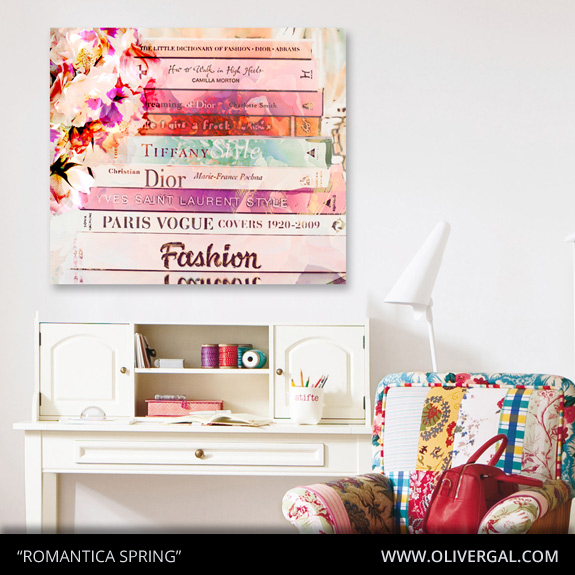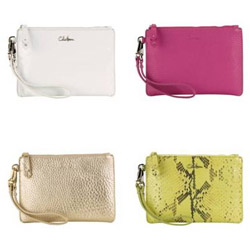
DALLAS, Aug 22, 2009 / FW/ — Born in 1991, this September’s college freshmen are totally wired or better yet, wireless, having grown up with the internet, the mobile phone and the digital media.
They might have fallen asleep in their car seats with their Game Boy or Harry Potter could easily have been their classmate, yet video games and the boy wizard aside, the Class of 2013 is the latest set of fashionistas.
Every year in September, when New York kicks off the Spring / Summer womenswear season, editors and writers are also faced with the hallway fashionista becoming a coed fashionista who will in turn become the fashion consumer in four years time when they graduate from college.
Called the Millennials or the Net Generation or Generation Y (a label they hate), according to demographers, are the group of people born between 1983 and 1992 with the leading edge of this group already 26 years old.
Well-versed in technology, the Millennials use technology at a higher rate than from other generations, according to a research by Junco and Mastrodicasa released in 2007. Though not digital natives (Generation Z has that honor, those born from 1993 and the first decade of the 2000s), Millennials are technocrats.
They write emails to their parents and use cell phones for both voice and texting. They have never used a card catalogue in a library and use the internet for research. They are familiar with the new media – from social networking sites like Facebook, Myspace, and Twitter to using YouTube.
So, how do we talk fashion to this generation? As part of the fashion press, are we speaking their language? Or are we even reaching them?
For years, Vogue’s September issue, which is now a documentary with the same title, has been fashion’s bible. The Great Recession, together with the wide use of the internet has slowly eroded the glossy’s readership to the point that rumors saying that STYLE.COM will be folded into VOGUE.COM hit the airwaves.
The reason for this move, again according to rumors is that Conde Nast wants to allow its flagship fashion title to grow an online presence as storied and influential as its print existence. And perhaps, this is by far, the best move by Conde Nast to capture the digital audience.
The Millennials might not know Anna Wintour or the other influential fashion editors like Glenda Bailey or Suzy Menkes, but these young fashionistas have surely gained from their knowledge. As the fictional Miranda Priestly explained to her young assistant Andrea in “The Devil Wears Prada”, the “stuff” in her office is the reason why Andrea is wearing a blue pullover sweater, something that the same group of people Andrea was working for that time put together several years ago.
So, perhaps, it is a good thing, for Anna Wintour and other fashion editors to go digital so that the fashion press can take back the web when it comes to fashion. With the advent of e-commerce site that doubles as “stylists”, standards are becoming blurred.
And though again, this can be a good thing, wherein individuality becomes the order of the day, standards are also good to have. After all, according to Tom McBride, Keefer Professor of the Humanities and Professor of English, author of the Beloit College Mindset list, those born in 1991 have never understood the meaning of R.S.V.P. because these initials have been used for so many things for Generation Y.
For the traditional, and the “standard” meaning of RSVP is “Répondez s’il vous plait”, a French phrase that translates to “please respond” or “respond if you’d please” and word for word means “respond if it pleases you”.
It is with this meaning that invitation cards and similar documents are often marked with “RSVP.” It is proper etiquette to reply to an RSVP request whether confirming attendance or declining.
It is also used in science and technology, wherein RSVP can mean: Rapid Serial Visual Presentation, a method of displaying information (generally text) using a limited space; Rare Symmetry Violating Processes, an experimental physics project or Resource reservation protocol (RSVP), a Transport layer Internet protocol
RSVP has also been used as titles of several songs, even the title of a film, a board game and the acronym for an annual bike ride from Seattle to Vancouver.
RSVP is also a pen made by Pentel, an Australian dating site, a volunteer program by senior citizens and in children’s entertainment, in Chuckle Vision, when asked what R.S.V.P. meant, Paul replied, “Red socks, velvet pants.”
A simple phrase, a much used acronym that has been associated with polite society for hundreds of years, RSVP has become mired with its so many uses. That alone is enough for fashionistas to try to find a standard wherein we can measure our fashion sense.
[MARI DAVIS]
Illustration by Julien Fournie



